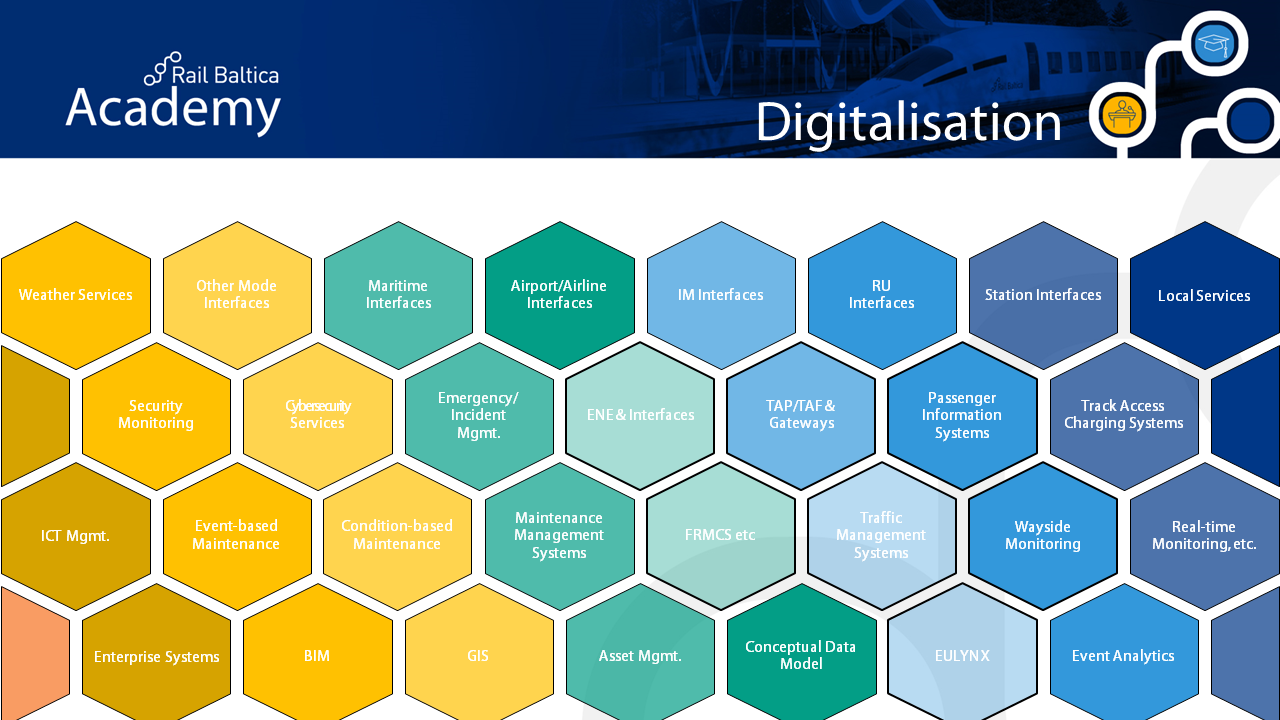Rail Baltica, the ambitious railway project linking Estonia, Latvia and Lithuania with a standard gauge railway connecting to Poland and beyond, is set to transform the Baltic States’ rail infrastructure. With a strong focus on digitalisation, Rail Baltica aims to revolutionise connectivity for passengers and freight.
 With a background in digitalisation and analytics projects within the rail sector, as well as experience in enterprise and mission-critical IT, Andy Billington, Innovation and Digital Architecture Senior Expert at RB Rail AS brings a wealth of knowledge to the forefront of Rail Baltica’s development. In this blog post, we explore the highlights of Andy’s digital lecture, uncovering the digitalisation initiatives and modern approaches driving the advancement of Rail Baltica.
With a background in digitalisation and analytics projects within the rail sector, as well as experience in enterprise and mission-critical IT, Andy Billington, Innovation and Digital Architecture Senior Expert at RB Rail AS brings a wealth of knowledge to the forefront of Rail Baltica’s development. In this blog post, we explore the highlights of Andy’s digital lecture, uncovering the digitalisation initiatives and modern approaches driving the advancement of Rail Baltica.
Digital Infrastructure for Enhanced Connectivity
Rail Baltica being a greenfield project offers various digital infrastructure options to improve connectivity. These include rural/regional connectivity, backbone networks, services at stations, and connectivity for socio-economic drivers. The focus is on implementing technologies like 5G and optical fibre to ensure efficient communication, enabling seamless operations and opportunities for enhanced services. Additionally, energy synergies are explored to improve grid resilience, provide standby power, support electric vehicle charging at regional stations, and leverage renewable energy sources.
Exploring Sensor Technologies
While the systems design for Rail Baltica is underway, the decision regarding sensor implementation is yet to be finalised. The project is evaluating a wide range of sensors, each serving different purposes, such as railway operations, asset management, and monitoring. These sensors vary in terms of data volume, velocity, cybersecurity requirements, and power/communications needs. Distributed Acoustic Sensing (DAS) is one option that enables monitoring of railway infrastructure’s structural health and vehicle properties by detecting vibrations caused by train movement. Other options include vehicle identification systems, weighing-in-motion, and smaller sensors, each providing unique data and with specific characteristics.
Integration of Sensor Data and Standardisation
Data integration will be a critical cornerstone for Rail Baltica’s success. While there are existing standards, the project aims to adopt modular systems and common standards to facilitate interoperability. By leveraging “off the shelf” software and solutions, vendor risks can be reduced, flexibility can be increased, and system lifecycle management can be optimised. Common integration tools can be employed for non-critical data, ensuring seamless access and availability of real-time and bulk data for monitoring and maintenance purposes. A common approach to component or asset identification can help with data integration, with consistent part or asset numbers used as a “key” to correlate data across systems and services.
Utilising Analytics and Machine Learning
The collected sensor data holds immense value in deriving meaningful insights. Machine learning algorithms can be employed to detect anomalies, outliers, cluster data, classify patterns, and enable predictive maintenance. By using standardised identifiers, data from various systems can be correlated, supporting broader application of these techniques.
Considering Cloud and On-Premises Solutions
Cloud solutions and on-premises deployments are both being considered for Rail Baltica. With cloud services providing scalability, some less sensitive systems can be hosted third party cloud platforms. Also, an internal cloud infrastructure can be established, mimicking the approach of major cloud providers like Azure and AWS. This allows for efficient data consumption by systems and machine learning algorithms without relying on a large and complex centralised data warehouse. Self-describing and discoverable data products promote collaboration between domain specialists, facilitating a self-service platform within the internal cloud.
To gain a deeper understanding of the project’s innovations and digitalization, watch Andy’s insightful lecture on Rail Baltica YouTube channel.

